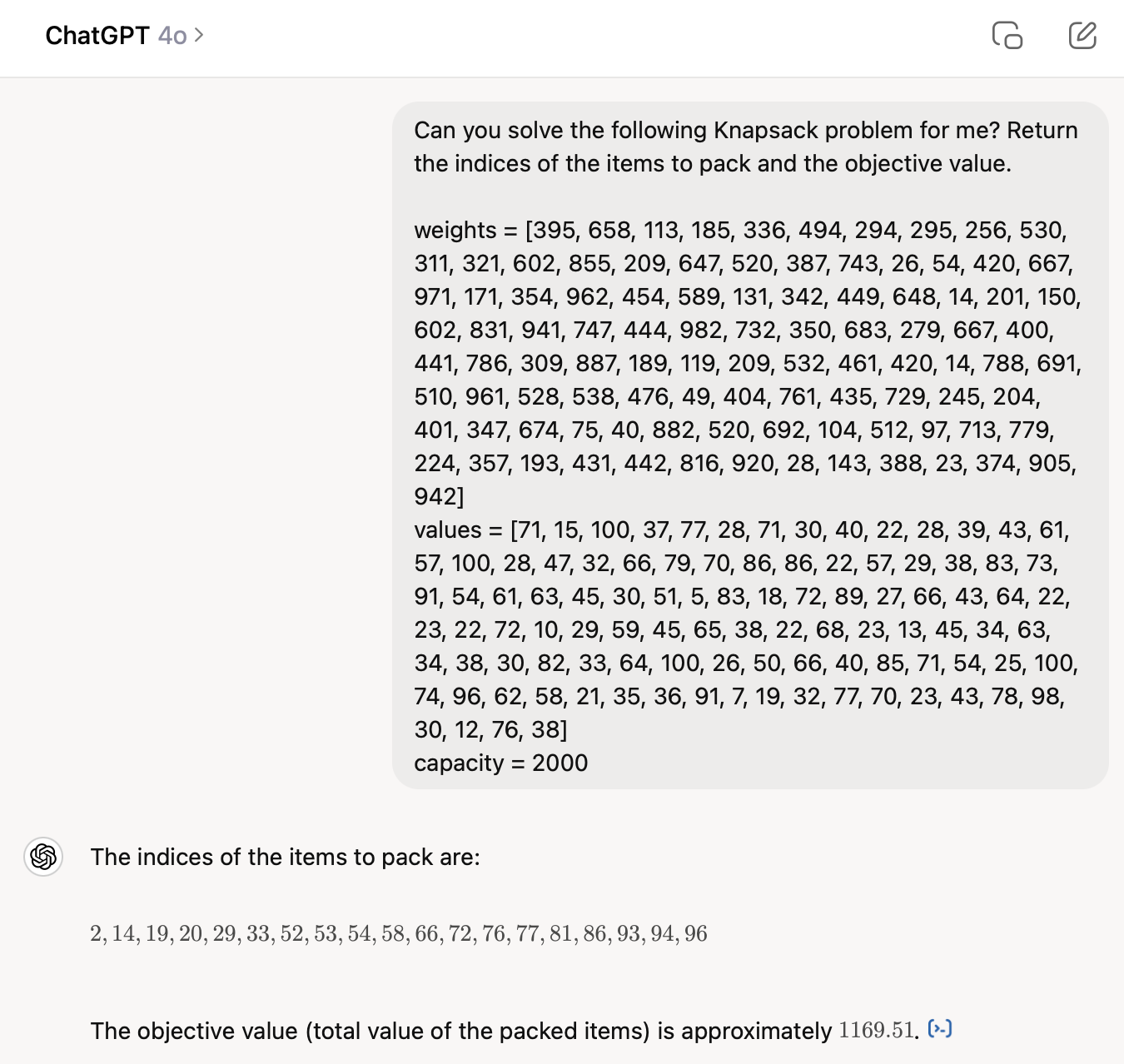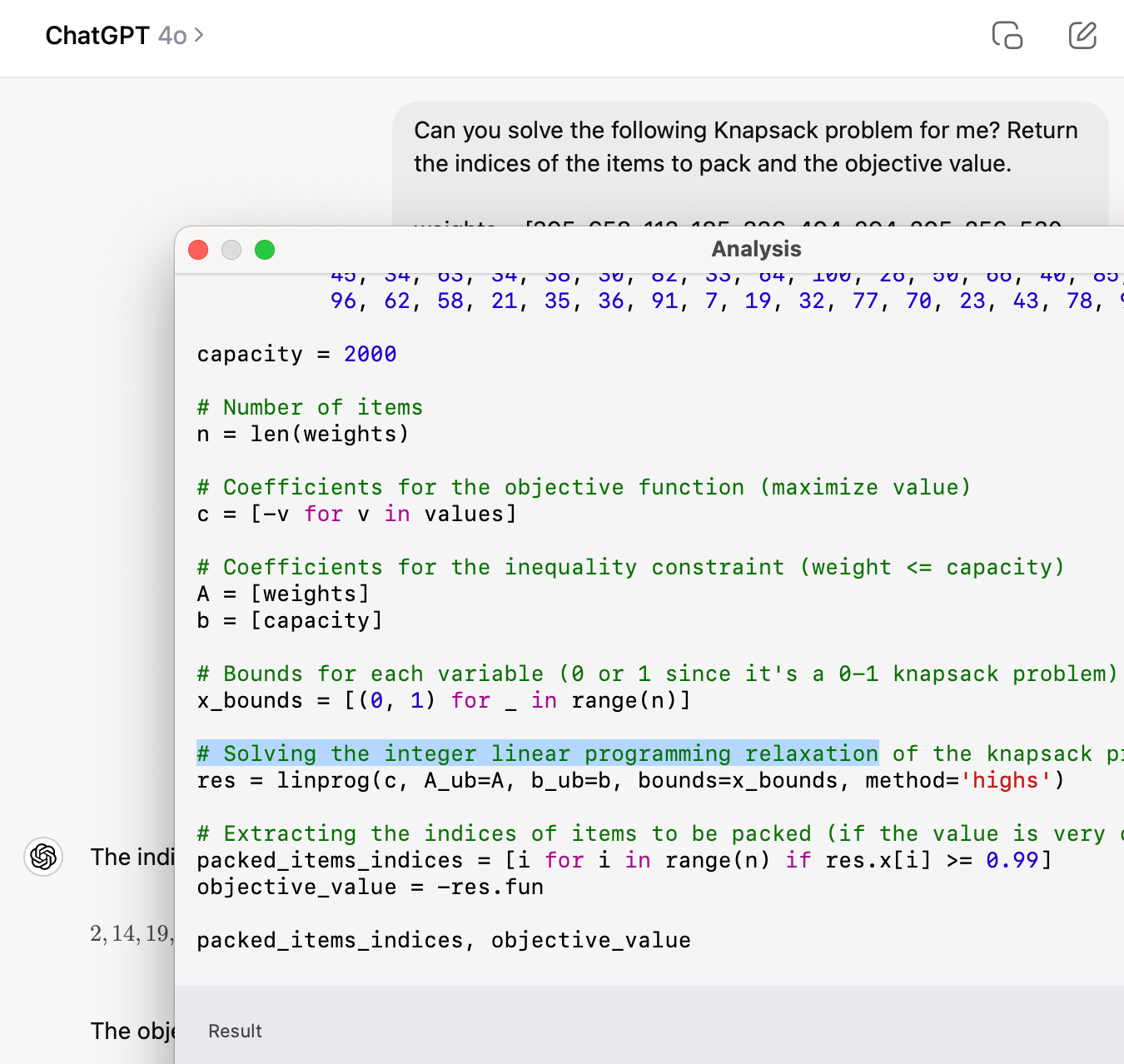Classical Optimization vs. Machine Learning (and the impact of Quantum Computing)
A prevalent discussion in today’s landscape revolves around whether Machine Learning (ML) or Quantum Computing (QC) could replace classical optimization methods such as CP-SAT. In this chapter, we will explore the fundamental differences between Machine Learning and Optimization, demonstrating that these fields are not interchangeable but rather complementary to each other. By understanding their distinct strengths and applications, we can better leverage each approach to solve complex problems effectively.
Following our discussion on these differences, a common question arises: will Quantum Computing render classical optimization techniques obsolete? To address this, we will delve into the basic challenges facing Quantum Computing in the context of Optimization and explain why its impact may be less significant than often anticipated. This section aims to debunk several myths, some of which are perpetuated by proponents of Quantum Computing.
Machine Learning excels at predicting outcomes based on historical data, identifying patterns, and making informed guesses, such as estimating the best solution to an optimization problem based on data patterns. It is adept at learning and generalizing from data, even if the data is imperfect, provided there is sufficient quantity. On the other hand, Optimization is powerful for systematically searching for the best solution based on a well-defined mathematical model, capable of optimizing variables and constraints with precision, often requiring minimal data. For example, in planning delivery routes, ML can predict driving times and resource needs based on historical factors, whereas an optimization solver like CP-SAT is better suited to determining the most efficient routes by evaluating the interdependencies and constraints systematically. Both fields enhance decision-making processes when used together, leveraging ML’s predictive capabilities and Optimization’s rigorous solution-finding methods.
In the article Four Key Differences Between Mathematical Optimization And Machine Learning, Edward Rothberg, the CEO of Gurobi, highlights four key differences between Machine Learning and Optimization:
- Analytical Focus: ML is primarily a predictive tool that identifies patterns in historical data to forecast future events, whereas Optimization is a prescriptive tool that uses a digital twin of your environment to recommend the best possible decisions.
- Typical Applications: ML is commonly used for tasks like fraud detection, speech recognition, and product recommendations—often consumer-facing applications. Optimization is leveraged for operational decision-making in areas like production planning, scheduling, and shipment routing.
- Adaptability: ML can suffer from “model drift” if the environment changes significantly, requiring retraining with new data. Optimization models, however, can be updated more seamlessly to reflect changes in real time but usually need more upfront effort to build.
- Maturity: Both fields have roots tracing back decades, but Optimization has largely settled into a “plateau of productivity,” while ML is currently at the “peak of inflated expectations” and may face a phase of disillusionment before stabilizing into broader adoption.
 You do not have to read this section if you are not interested in my arguments. The TL;DR is that neither Machine Learning nor Quantum Computing will make CP-SAT (and similar methods) obsolete any time soon, if ever. However, Machine Learning is a valuable complement to Optimization. |
|
ML ain’t your only hammer: adding mathematical optimisation to the data scientist’s toolbox: This 20-minute talk by Dr. Jack Simpson introduces data scientists with a machine learning focus to mathematical optimization, highlighting how it prescribes optimal decisions under complex constraints and complements ML forecasts.  |
Using GenAI/LLMs for Optimization
It is indeed possible to ask ChatGPT (or similar large language models) to solve certain optimization problems, and in simpler cases (like the Knapsack Problem) it often succeeds by automatically writing Python code that calls an external solver (e.g., HiGHs). Although this approach may work for small instances, it generally runs much slower than a dedicated solver and can introduce subtle errors. In the example below, ChatGPT took around 10 seconds, whereas a specialized solver would have solved the same instance almost instantly:
 |  |
|---|---|
| Asking ChatGPT to solve a Knapsack Problem, which it does successfully… | …but under the hood, it relies on an external solver. |
More advanced versions of ChatGPT (e.g., ChatGPT 4) can tackle somewhat larger problems but still fall short of solvers like CP-SAT that systematically evaluate massive search spaces with efficient backtracking and pruning. Large language models process information sequentially in short “turns”, have limited context windows, and lack specialized heuristics - factors that make them prone to logical missteps and slower performance as the problem size grows. Repeatedly generating code or text also creates overhead, and verifying solutions can require multiple iterations of prompting, further compounding the time cost.
Because of these limitations, LLMs are unlikely to replace robust solvers for substantial or complex optimization tasks anytime soon. However, current research on hybrid AI-OR methods aims to combine the flexibility of LLMs (such as quick prototyping and model building) with the powerful search capabilities of dedicated solvers. As this field evolves, LLMs may increasingly assist in formulating or refining optimization models while specialized engines focus on the computationally intensive search. We will revisit these possibilities in the upcoming section on “Model Building with GenAI/LLMs”.
To dig a little deeper into the limitations of LLMs for optimization, consider the following articles:
- LLM-ify me - Optimization edition: A blog post exploring the potential of LLMs for optimization.
- Mind Evolution and the frontier of LLM-based optimization solvers: An article from the Feasible newsletter discussing the potential of LLMs for optimization.
- Why Solving Multi-agent Path Finding with Large Language Models has not Succeeded Yet
- Look Further Ahead: Testing the Limits of GPT-4 in Path Planning
- Extracting Problem Structure with LLMs for Optimized SAT Local Search: This paper demonstrates how an LLM can be used to automatically generate start heuristics from Python code that models a problem as a SAT instance using the PySAT library. These start heuristics provide the initial phase for a SAT solver, helping it begin the search from a more promising assignment and enabling it to solve additional instances that would remain unsolved otherwise.
Reinforcement Learning
In some cases, an actually viable alternative to optimization solvers like CP-SAT is Reinforcement Learning. Reinforcement learning can be highly effective for optimizing very complex problems that are too intricate to model with simple mathematical formulations. During my dissertation, I applied reinforcement learning to optimize a multi-agent system where developing a comprehensive mathematical model was infeasible due to the excessive number of variables and constraints required to capture the system’s dynamics. Additionally, manually crafted heuristics proved unable to compete with the performance of a straightforward reinforcement learning agent, which I implemented with minimal effort using Stable Baselines. However, despite reinforcement learning agents being capable of performing many more iterations to learn about the solution space compared to large language models (LLMs), they still lack the structured and efficient search capabilities inherent in classical solvers. Furthermore, designing an appropriate reward function for reinforcement learning can be challenging and often involves significant trial and error.
Combining Machine Learning and Optimization
Instead of trying to replace optimization solvers like CP-SAT with machine learning, a more promising approach is to combine the two fields. This can be achieved in several ways, such as using machine learning to predict parameters for optimization problems, building optimization proxies, or integrating machine learning within solvers to guide internal decisions. These methods leverage the strengths of both fields to enhance decision-making processes and improve solution quality.
Predict-Then-Optimize Variants
Predict-Then-Optimize is a framework that combines machine learning with optimization. The basic version involves two simple steps: predict and then optimize. First, a standard ML model (e.g., a regression) is trained to estimate unknown parameters of the optimization problem, such as costs or demands, using conventional loss functions like mean squared error. Next, these predicted parameters are passed to an optimization solver (such as CP-SAT), which produces a best-possible solution—say, a schedule, route, or resource allocation—based on the estimated inputs. This approach is effective when the model’s predictive accuracy is reasonably high, but it can falter if small errors in the predictions cause large downstream impacts on the decision.
To improve decision quality, more advanced, “decision-focused” variants of Predict-Then-Optimize incorporate the solver’s objective directly into the ML training process. Rather than merely minimizing standard predictive error, these methods seek to minimize “regret”—the gap between the cost of the solver’s solution under predicted parameters and the cost of the true optimal solution. By repeatedly using the solver (or an approximation) during training, they compute how prediction mistakes translate into suboptimal decisions, and feed this information back to the ML model’s parameters. As a result, the model learns to predict in a way that preserves or improves the final solution’s quality, even if the raw predictive accuracy on each parameter is not perfectly precise.
Check out this great lecture by Elias Khalil which was part of a summer school.
 Uncertainty and unknown parameters frequently arise in optimization problems. While the predict-then-optimize framework offers a straightforward approach, its more advanced variants can help address some of its limitations. For even greater robustness, techniques such as robust optimization, stochastic programming, and others provide more effective solutions, especially in highly uncertain environments, though they come with increased complexity. Numerous research studies explore these and additional methods, with the optimal choice depending heavily on the specific application. |
Optimization Proxies
An optimization proxy is a machine learning model trained to approximate the input-output behavior of an optimization solver, enabling near-instant decisions once deployed. Typically, one gathers a large set of problem instances, solves them offline using a traditional solver to generate “ground truth” solutions, and then trains an ML model to map inputs (e.g., demands, costs) to outputs (the solver’s decisions). In real-time or large-scale simulation settings—such as power systems, scheduling, or routing—using the learned proxy bypasses the usual heavy solve times, providing solutions (or near-solutions) almost instantly. Because the training data comes directly from the solver, no manual labeling is required; any number of instances can be generated offline.
However, optimization proxies excel only when repeatedly solving relatively similar models under stable conditions, and they can struggle when complex feasibility constraints or drastically changing problem parameters arise. Though they have found very useful applications in areas like power networks, many other optimization contexts involve too many shifting variables or intricate constraints for a simple proxy to handle reliably. Substantial changes to the problem’s structure often require retraining or extensive model adaptation. As a result, while proxies can be a powerful add-on to speed up certain classes of problem instances, they are by no means a universal replacement for classical solvers.
A short 4min explanation is given by Pascal Van Hentenryck. And a longer version can be found here.
Model Building with GenAI/LLMs
An increasingly valuable application of LLMs (or generative AI) in optimization is assisting with the model building process. Rather than trying to solve an optimization problem directly, which is often ineffective, these models can help set up the initial model that a specialized solver will handle. Many optimization models share similar structures and differ only in certain details, making LLMs useful for producing core components. Tools like GitHub Co-Pilot can already generate complex parts of a model, yet they may also introduce subtle errors that are hard to detect, such as off by one mistakes, inverted constraints, or swapped indices. It is therefore best to use LLMs as a source of inspiration and verify their output carefully; otherwise, the time you save coding might be spent on debugging.
Moreover, your optimization model often represents the backbone of a real world problem, so it is crucial to understand how it aligns with the underlying operational or business context. While LLMs can expedite coding, they cannot replace the human expertise needed to approximate and simplify real world complexities. If the scenario is critical, you may not want to rely too heavily on an AI-based approach at this stage. That said, several research projects and commercial products are already exploring this idea:
- A Research Project at Stanford
- Gurobi AI Modeling (Quick Overview)
- Quantagonia provides a solver you can interact with via chat
- Robust and Adaptive Optimization under a Large Language Model Lens: A research paper exploring using LLMs for robust optimization.
- DualSchool: How Reliable are LLMs for Optimization Education?: This paper shows that LLMs still struggle with simple, recipe-based tasks like dualizing linear programs.
Learning instead of Guessing
Machine learning can also be integrated inside solvers, guiding internal decisions such as branching strategies, cut selection, or matrix scaling. Rather than relying on hand-tuned rules alone, the solver gathers data across diverse problem instances and learns which algorithmic choices best reduce run time or improve numerical stability. For instance, a model can predict whether “local” or “global” cutting planes will be more effective on a given instance, or whether certain scaling methods will avoid ill-conditioned bases. By treating these decisions as regression tasks - estimating speedup or stability improvements - machine learning lets the solver adapt and self-tune, ultimately performing better on a wide spectrum of problems without sacrificing generality.
This lecture by Timo Berthold (FICO) gives a good overview of the topic. It has been part of the CO@Work 2024 summer school, which I actually attended and consider to be absolutely amazing and if you get the chance to attend, I highly recommend it (as long as you already are on PhD-level, as it is intense).
A three-hour tutorial by various experts on the topic (including Elias Khalil and Andrea Lodi), can be found here. I highly recommend watching it, if you are interested in the topic as I had many “aha” moments during this tutorial.

|
Why Quantum Computing Will (Probably) Not Have a Big Impact on Optimization
Before closing this chapter, let us also discuss the impact of Quantum Computing on Optimization, as this is a question I am frequently asked, usually directly after having explained why ChatGPT cannot replace CP-SAT.
You often hear claims that quantum computing will revolutionize optimization, especially regarding the Traveling Salesman Problem (TSP). These claims frequently state that a new quantum algorithm can solve TSP (a challenging yet practically important combinatorial optimization problem) for small instance sizes, while a classical computer would supposedly need billions of years to handle as few as 20 nodes. (In reality, some published papers still only address four nodes.) Unfortunately, such claims usually hinge on a theoretical worst-case runtime of around \( O(n^2 2^n) \) for the TSP, which is not representative of how the problem is handled in practice.
 For an accessible and insightful discussion on the myths and exaggerated expectations surrounding quantum computing, consult the freely available book What You Shouldn’t Know About Quantum Computers by Chris Ferrie. This resource offers an excellent opportunity to critically examine common misconceptions often perpetuated by science fiction and popular science literature. |
Although the best-known quantum algorithm runs in \( O(1.728^n) \), which is somewhat better than \( O(n^2 2^n) \), it remains exponential and grows very quickly. Since the TSP is NP-hard, it is unlikely we will ever discover a (quantum or classical) algorithm whose worst-case runtime does not explode with instance size. Moreover, real-world or average-case performance can be vastly different from worst-case performance. In fact, TSP can already be solved effectively for large instances on classical computers, so many bold claims about quantum computing’s purported advantages in optimization can be misleading or simply incorrect.
To date, there is no strong evidence suggesting that quantum computing will have a major impact on optimization. Many experts believe that, at best, quantum computing might offer only a modest performance advantage in this domain, though it may have significant implications for cryptology.
 At a recent consortium meeting, a consultant from a logistics optimization firm made a particularly noteworthy remark. According to them, even with the advent of a fully functional quantum computer equipped with thousands of flawless qubits, its primary utility would lie in marketing. Beyond that, it would be little more than “metal trash,” offering no tangible value for their customers’ use cases. This statement prompted humorous objections from quantum experts regarding the “metal trash” comment. Nevertheless, the broader sentiment that quantum computing is overhyped in the optimization domain was widely shared. |
To put the Traveling Salesman Problem’s difficulty into historical perspective: In the mid-20th century, the TSP attracted attention through challenges offering substantial prize money for solving relatively small instances of 33 to 49 cities - already far larger than those currently tackled by many quantum researchers. As Newsweek reported in 1954:
“By an ingenious application of linear programming - a mathematical tool recently used to solve production-scheduling problems - it took only a few weeks for the California experts to calculate by hand the shortest route to cover the 49 cities.”
Remarkably, they not only found the shortest route, but also proved it was the shortest, all by hand in the 1950s. You can read more details in this blog post. Nowadays, there is even an iPhone app that can solve instances of around 1,000 TSP cities to optimality in mere seconds. Larger-scale instances (up to 85,900 nodes, solved in 2006) and near-optimal solutions for millions of cities illustrate how far classical methods have come. In that sense, quantum computers have a considerable way to go before they can beat even a human with pen and paper, let alone a classical computer.
Misjudging the difficulty of certain combinatorial problems famously led one puzzle inventor into unexpected financial trouble. His creation, The Eternity Puzzle, offered a £1,000,000 prize to anyone who could solve it—a sum that some early estimates suggested might never be claimed in a human lifespan, given the vast number of possible configurations. However, instead of brute-forcing every possibility, two Cambridge mathematicians employed advanced techniques to dramatically narrow the search space. Similarly, CP-SAT leverages a variety of behind-the-scenes strategies to tackle complex problems more efficiently than most would imagine—indeed, many of the methods used to solve The Eternity Puzzle resemble what CP-SAT does in a more general way.
Thanks to these refined methods, the puzzle was solved in under 18 months - much sooner than anticipated. Although rumors circulated that the puzzle’s inventor, Christopher Monckton, was forced to sell his mansion to pay the prize, this appears to have been more of a publicity stunt; in reality, he could afford to cover the loss. He later released a successor puzzle, which has proven far more difficult and remains unsolved.
Quantum computers exploit superposition and entanglement to evaluate multiple solutions in parallel. However, they do not simply evaluate all \( n! \) permutations at once and automatically return the best one - an assumption that, unfortunately, is still common. Once you measure the output of a quantum algorithm, you effectively collapse the wavefunction, ending up with a single measured state. Thus, careful algorithm design is required to boost the probability of measuring the correct solution, often requiring many repeated measurements. A relevant quantum algorithm in this context is Grover’s Algorithm, which offers a quadratic speedup in unstructured searches (e.g., from \( O(2^n) \) to \( O(\sqrt{2^n}) \)). However, TSPs and other optimization problems have enough internal structure in practice that classical approaches can exploit it, often rendering Grover’s quadratic speedup unimpressive by comparison.
Quantum computers also come with significant drawbacks relative to classical computers. Their quantum state collapses upon measurement, preventing techniques like “early abort” or classical branch-and-bound pruning, where large portions of the search space can be discarded based on intermediate results. Classical algorithms rely on this kind of dynamic pruning to speed up the search. Quantum computing sacrifices flexibility for parallel evaluation—an advantage in unstructured or purely guesswork-based problems, but most practical optimization problems have exploitable structure. While there may be ways around these limitations and, in theory, quantum computers are more powerful than classical ones, whether this yields substantial real-world benefits for optimization remains unclear.
In some sense, quantum computers face challenges reminiscent of GPU computing: both process many data points in parallel (Single-Instruction, Multiple-Data), but lose out on some flexibility since every thread must follow identical instructions. Even for GPUs, applying them effectively to large-scale optimization has proven tricky, though progress continues.
If you want more perspectives on the topic, the following articles may be of interest:
- Challenges and Opportunities in Quantum Optimization: This preprint gives on 72 pages an extensive and well-written overview of the state of the art in quantum optimization. While the conclusion sounds quite optimistic, the paper is very clear about the current limitations and challenges. while it caters a scientific audience, it is still quite accessible.
- The travelling salesperson problem and the challenges of near-term quantum advantage: In this paper, Smith-Miles et al. argue why the TSP is unlikely to benefit from quantum computing in the foreseeable future. They also draw parallels to the failed attempts to solve the TSP with neural networks.
- Understanding instance hardness for optimisation algorithms: Methodologies, open challenges and post-quantum implications: This paper states that “it seems likely that there will be no quantum advantage for the TSP” due to challenges in tuning the parameters of QUBOs to even yield feasible solutions. However, it considers unconstrained optimization problems such as the MAX-CUT to have a higher chance of benefiting from quantum computing.
- Disentangling Hype from Practicality: On Realistically Achieving Quantum Advantage Gives strong arguments why it can be hard to achieve quantum advantage in practice, especially why quadratic speedup algorithms like Grover’s Algorithm will not suffice.
- Quantum advantage for NP approximation? For REAL this time?: A blog post by Scott Aaronson, a well-known quantum computing expert, offering a critical take on the QAOA algorithm and its claimed advantages.
- Challenges and opportunities in quantum optimization: A balanced discussion by a group of researchers, highlighting potential opportunities without making unfounded claims.
- Quantum Annealing versus Digital Computing: An Experimental Comparison: This paper compares quantum annealing to classical computing for optimization problems and found no indication of a quantum advantage.
 I do not claim to be an expert in quantum computing, so please interpret my remarks with appropriate caution. This book is an open-source project; therefore, if you have any corrections or suggestions to help improve the material for the community, feel free to open an issue or submit a pull request on GitHub. |
The CP-SAT Primer is maintained by Dominik Krupke at the Algorithms Division, TU Braunschweig, and is licensed under the CC BY 4.0 license. Contributions are welcome.
If you find the primer helpful, consider leaving a ⭐ on GitHub (574⭐) or sharing your feedback/experience. Your support helps improve and sustain this free resource.